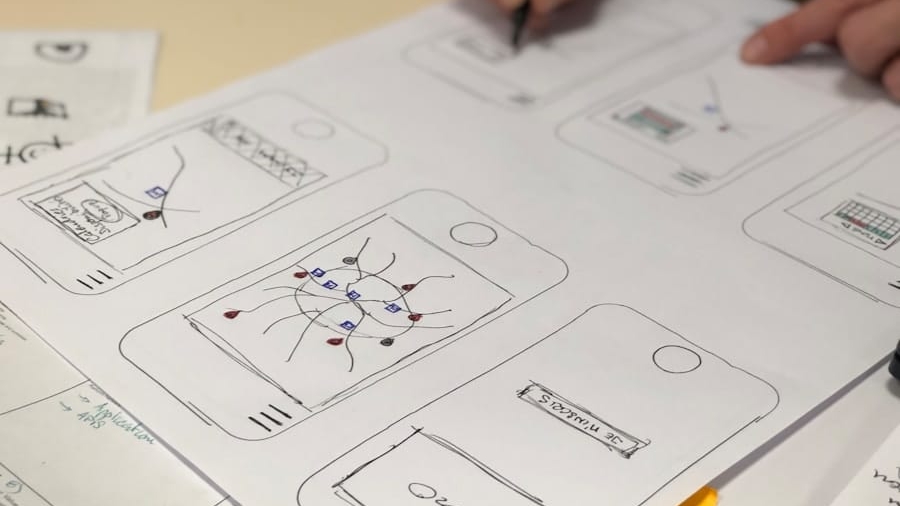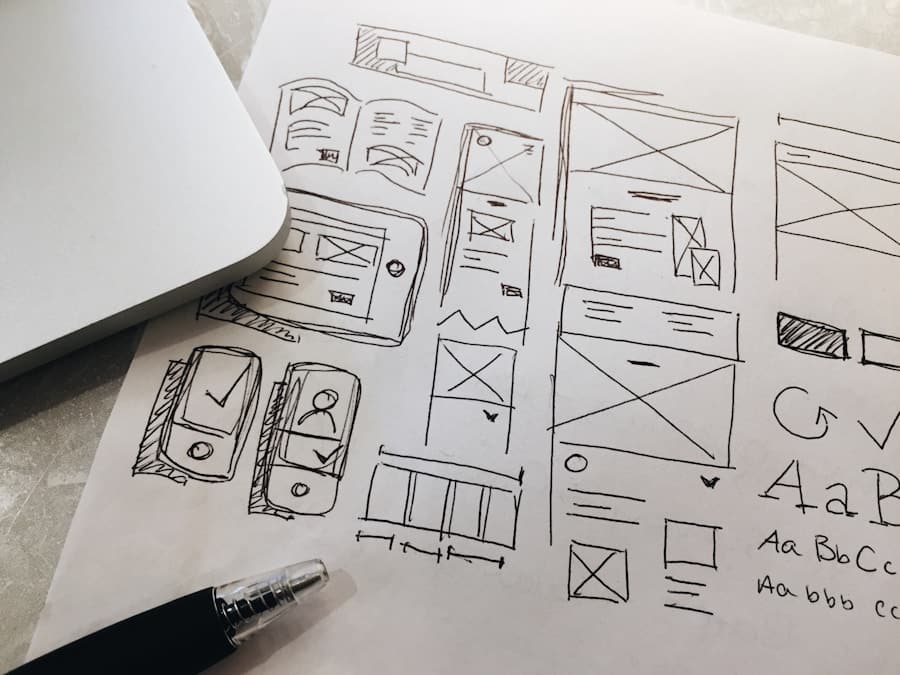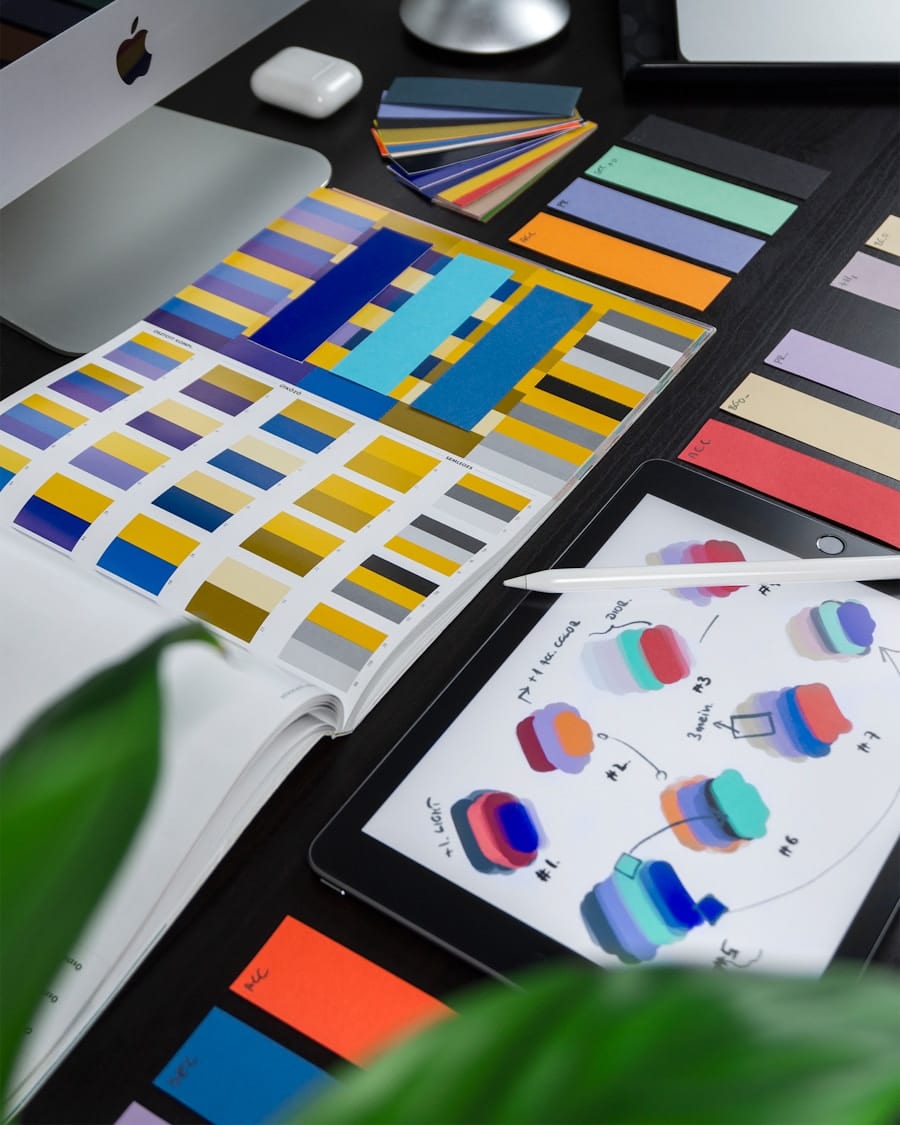Artificial Intelligence (AI) has emerged as a transformative force across various industries, and the realms of design and illustration are no exceptions. The integration of AI technologies into creative processes is reshaping how artists and designers conceptualize, create, and execute their work. From automating mundane tasks to providing innovative tools that enhance creativity, AI is revolutionizing the landscape of visual arts.
As designers increasingly adopt AI-driven solutions, the boundaries of creativity are being pushed, allowing for new forms of expression and efficiency. The evolution of AI in design and illustration can be traced back to the development of machine learning algorithms and neural networks, which have enabled computers to analyze vast amounts of data and generate outputs that mimic human creativity. This technological advancement has led to the creation of sophisticated tools that assist artists in various stages of their work, from ideation to final execution.
As we delve deeper into the role of AI in this field, it becomes evident that its influence extends beyond mere automation; it is fundamentally altering the way we perceive creativity itself.
Key Takeaways
- AI is revolutionizing the design and illustration industry by automating repetitive tasks and enhancing the creative process.
- AI tools and software are being used to streamline workflows, improve efficiency, and create new possibilities for designers and illustrators.
- The impact of AI on the design and illustration industry is significant, leading to increased productivity and the potential for new job opportunities.
- Designers and illustrators can embrace AI by learning how to use AI tools and software, staying updated on industry trends, and exploring ethical considerations.
- The future of AI in design and illustration is promising, with continued advancements in technology and the potential for even greater integration of AI into creative workflows.
The Role of AI in Automating Repetitive Tasks
Streamlining Workflows
-powered tools can take over these repetitive functions, allowing designers to focus on more complex and imaginative aspects of their work. For instance, AI algorithms can analyze design patterns and automatically generate variations based on predefined parameters. This capability not only speeds up the design process but also ensures consistency across multiple iterations.
Efficient Results with Machine Learning
Sensei and other machine learning-powered tools can automate tasks such as image tagging and content-aware fill, enabling designers to achieve results more efficiently. By reducing the time spent on mundane tasks, AI empowers designers to allocate their energy toward ideation and innovation, ultimately enhancing the quality of their work.
Enhancing Creativity
By automating repetitive tasks, AI gives designers the freedom to focus on what matters most – creativity and innovation. With more time and energy to devote to the creative process, designers can produce high-quality work that showcases their skills and talent.
How AI is Enhancing the Creative Process in Design and Illustration
Beyond automation, AI is also enhancing the creative process itself by providing designers with new avenues for exploration and inspiration. Machine learning algorithms can analyze vast datasets of existing designs, identifying trends and patterns that may not be immediately apparent to human creators. This analytical capability allows designers to gain insights into what works and what doesn’t, informing their creative decisions and expanding their artistic horizons.
Moreover, AI tools can assist in generating ideas by offering suggestions based on user input or existing designs. For example, platforms like Runway ML enable artists to experiment with generative design techniques, where algorithms create unique visual outputs based on specific parameters set by the user. This collaborative relationship between human creativity and machine intelligence fosters an environment where innovation thrives.
Designers can push the boundaries of their imagination, exploring concepts that may have previously seemed unattainable.
The Impact of AI on the Design and Illustration Industry
The impact of AI on the design and illustration industry is profound and multifaceted. As AI technologies continue to evolve, they are reshaping not only how work is produced but also how it is perceived within the industry. The traditional roles of designers are being redefined as AI takes on more responsibilities, leading to a shift in skill requirements and job descriptions.
While some may view this as a threat to creative professions, others see it as an opportunity for growth and adaptation. The integration of AI into design workflows has also led to increased collaboration between human designers and machines. This partnership allows for a more dynamic approach to problem-solving, where designers can leverage AI’s analytical capabilities while infusing their unique perspectives into the creative process.
As a result, the industry is witnessing a surge in innovative projects that blend human intuition with machine-generated insights, leading to groundbreaking designs that challenge conventional norms.
Examples of AI Tools and Software Used in Design and Illustration
Numerous AI tools and software have emerged in recent years, each offering unique functionalities that cater to different aspects of design and illustration. One notable example is Canva’s Magic Resize feature, which utilizes AI to automatically adjust designs for various platforms and formats with just a click. This tool significantly reduces the time spent on manual resizing, allowing designers to maintain consistency across different media.
This software enables artists to create highly detailed 3D models with customizable features, streamlining the character design process. Additionally, tools like Artbreeder allow users to blend images using generative adversarial networks (GANs), resulting in unique artwork that combines elements from multiple sources.
These examples illustrate how AI is not only enhancing efficiency but also expanding creative possibilities within the design and illustration landscape.
Ethical and Moral Implications of AI in Creative Industries
As with any technological advancement, the rise of AI in creative industries raises important ethical and moral questions. One major concern revolves around authorship and ownership of AI-generated works. When an algorithm produces a piece of art or design, who holds the rights to that creation?
This question becomes increasingly complex as AI systems become more autonomous in their creative processes. The legal frameworks surrounding intellectual property may need to evolve to address these challenges adequately. Moreover, there are concerns about the potential for bias in AI algorithms.
If the data used to train these systems reflects societal biases or stereotypes, the outputs generated by AI could perpetuate these issues in design and illustration. Designers must remain vigilant about the ethical implications of their tools and strive for inclusivity in their work. As they embrace AI technologies, it is crucial for creatives to engage in discussions about responsible usage and ensure that their practices align with ethical standards.
The Future of AI in Design and Illustration
Looking ahead, the future of AI in design and illustration appears promising yet uncertain. As technology continues to advance at an unprecedented pace, we can expect even more sophisticated tools that will further blur the lines between human creativity and machine intelligence.
Additionally, as AI becomes more integrated into educational programs for aspiring designers, we may see a new generation of creatives who are adept at leveraging these technologies from the outset. This shift could lead to a more collaborative ecosystem where human designers work alongside intelligent systems to push the boundaries of what is possible in visual arts. However, it will be essential for industry stakeholders to navigate this evolving landscape thoughtfully, ensuring that creativity remains at the forefront while embracing the benefits that AI has to offer.
Tips for Designers and Illustrators to Embrace AI in their Work
For designers and illustrators looking to incorporate AI into their workflows, several strategies can facilitate a smooth transition into this new paradigm. First and foremost, it is essential to stay informed about emerging technologies and tools within the field. Regularly exploring new software updates or attending workshops focused on AI applications can provide valuable insights into how these innovations can enhance creative processes.
Additionally, designers should approach AI as a collaborative partner rather than a replacement for their skills. By experimenting with different tools and understanding their capabilities, artists can discover ways to integrate AI into their workflows that complement their unique styles and approaches. Embracing a mindset of curiosity will enable creatives to explore uncharted territories in their work while harnessing the power of technology.
Furthermore, engaging with communities focused on AI in design can foster collaboration and knowledge sharing among peers. Online forums, social media groups, or local meetups can provide platforms for discussing best practices, sharing experiences, and learning from one another’s successes and challenges. By building connections within this evolving landscape, designers can collectively navigate the complexities of integrating AI into their creative endeavors.
In conclusion, as artificial intelligence continues to shape the future of design and illustration, it presents both opportunities and challenges for creatives. By understanding its capabilities, embracing collaboration with technology, and remaining mindful of ethical considerations, designers can harness the power of AI to elevate their work while pushing the boundaries of creativity itself.
In a related article discussing the latest trends in e-commerce business, it is evident that technology, including AI, is playing a crucial role in automating various tasks to enhance efficiency and productivity. To learn more about the best shared hosting services in 2023 and how they can support the growth of e-commerce businesses, check out




